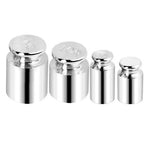Brands
420 Science Anomaly Arizer Astral Project Banana Bros. Beamer - Belles brûlures
Best Buds - Blazer
-
Boveda BRNT Designs Canada Puffin Cannabolish - Chongz
Cooco CVault DaVinci - Marques d'éléphants
- EVault
Eyce Flowermate - Formule 420
Fresh San Diego Funtime Gifts Futurola G-Pen Green Jay Greengo Groove Heady Dad Higher Standards Hitoki Holk - Laboratoires de miel
Hush Kush Insomnia Fun Insomnia Smoke Integra Boost Kannastör King Palm Magical Marley Natural - MJ Arsenal
My Bud Vase Narcos Oak and Earth Creations On Balance -
Ongrok - Ozium
Raw RYOT Saverette Scrubber Ducky - Biens de session
Shine Smoke Odor ExterminateurSmokebuddy Smokezilla Stona Storz & Bickel Stündenglass - Tyson2.0
Wu-Tang Zong Wick - ... Toutes les autres marques



